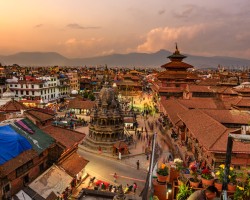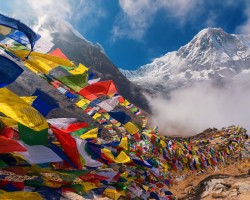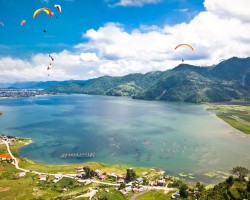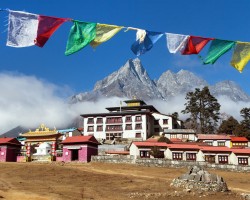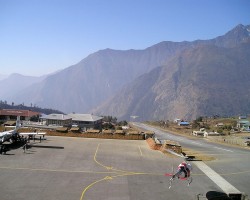Best time to go to Nepal for a perfect weather and where to go?
When is the best time to go to Nepal?
The best time to visit Nepal is from October to April, during the dry season. However, the choice of your holiday dates will mainly depend on the experiences you wish to have there.
Indeed, Nepal has two main seasons and two intermediate seasons, all influenced by a monsoon phenomenon. Each with its advantages and disadvantages:
- October and November are the most pleasant months to visit Nepal, as the air becomes drier and cooler. The landscapes, greened by the monsoon rains, are beautiful. Tourists and hiking enthusiasts flock in large numbers to enjoy the mild climate and perfect visibility. At this time, most hotels in Kathmandu and Annapurna are fully booked. Also, be prepared to increase your travel budget, as prices soar during the peak tourist season.
- Between December and February, winter is in full swing and experiences a slight monsoon which, due to altitude, brings heavy snowfall to the peaks. It is not the best season for trekking in the mountains, as some passes and most lodges are closed. However, it is entirely possible to stay in the Kathmandu Valley: the light is beautiful and the mountain ranges are clearly visible. Be sure to dress warmly, as temperatures can drop close to 0°C (32°F) when the sun sets.
- From March to May, it is springtime. The snow melts and temperatures gradually rise. Meadows are covered with flowers and the sun is still shining brightly. If you want to go hiking, April is the best month, combining all the favorable conditions for a memorable trek. Expect increasingly humid weather towards the end of the season, although this should not deter you from planning a trip.
- Between June and September, it is the summer monsoon season: rains are heavy, sometimes violent, and the sky is mostly overcast (especially in July-August). Hikers should avoid trekking in the valleys and mountain slopes, as the risk of landslides is significant and leeches are everywhere. Moreover, with a fairly thick cloud cover, visibility is poor. However, for a rejuvenating experience amidst lush nature and a getaway to neighboring countries, the attractive hotel offers are enticing.
Where and when to go based on the weather?
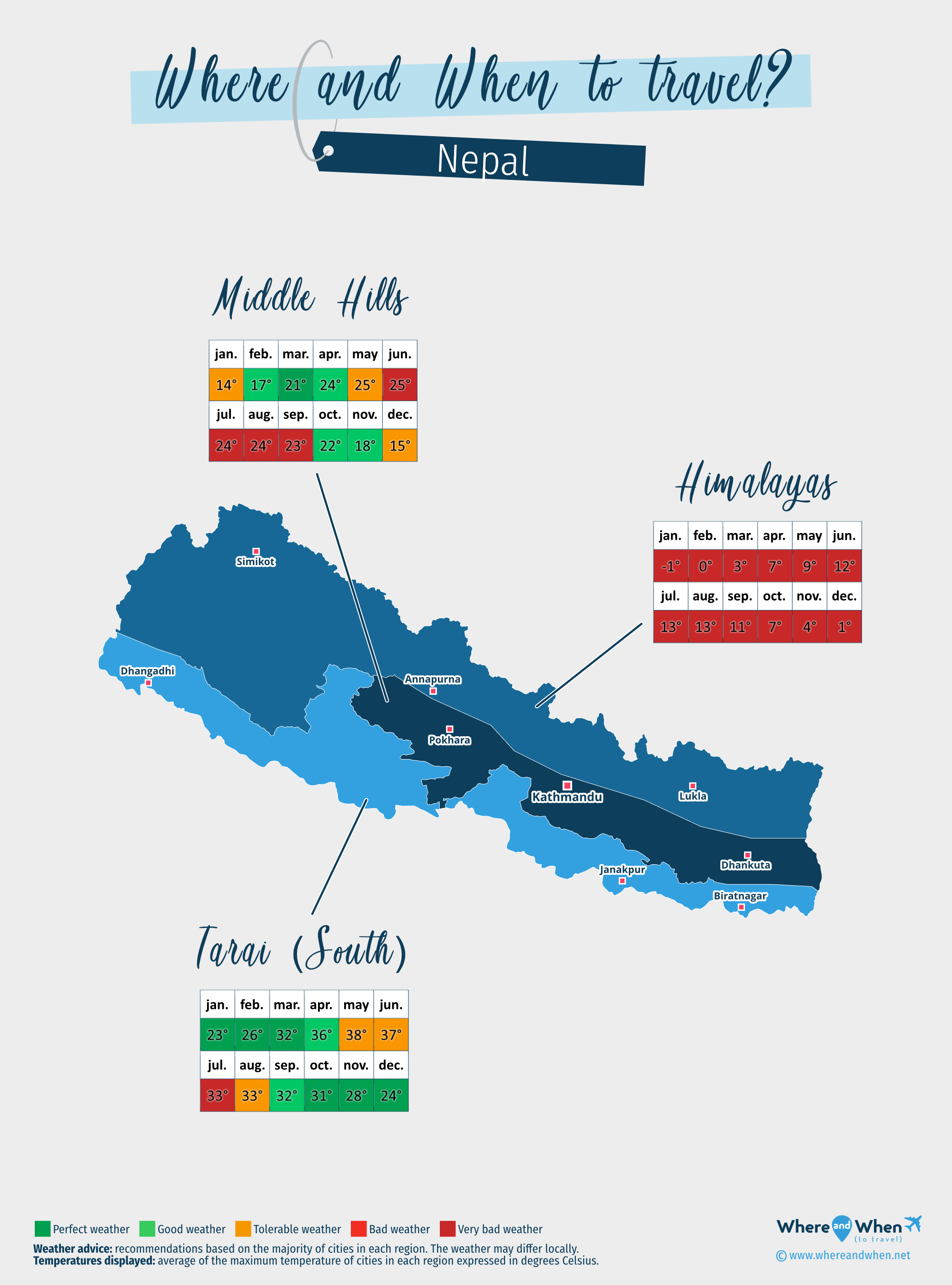
Himalayas
Annapurna, Lukla, Simikot...
Middle Hills of Nepal
Kathmandu, Pokhara, Dhankuta...
Tarai (South)
Biratnagar, Janakpur, Dhangadhi...
To get all the information about the climate and weather in Nepal for a specific month, click on the corresponding link below:
Nepal in january Nepal in february Nepal in march Nepal in april Nepal in may Nepal in june Nepal in july Nepal in august Nepal in september Nepal in october Nepal in november Nepal in december
Best time to travel to Nepal by cities
Climate and Weather in Nepal
The climate of Nepal experiences very large variations, notably due to its different altitudes. Here are the main trends:
- The predominant climate is humid subtropical with a dry winter and hot summer. This is the climate found in the capital, Kathmandu, as well as in all areas below 1000 meters above sea level, such as the Terai region in the southern part of the country.
- Between 1,000 and 3,000 meters above sea level, the climate is subtropical at higher altitudes with a dry winter and temperate summer. This climate prevails north of the Kathmandu Valley, towards the city of Pokhara.
- In the Himalayas, above 3000 meters, there are two types of climates: subarctic with a dry winter and cool summer in the Simikot region, and polar tundra climate in the Annapurnas.
It is worth noting that, as in all mountainous regions, the weather in Nepal is difficult to predict and can change very rapidly. If you are going on a multi-day trek, it is important to be cautious and rely on the recommendations of your guide who knows the region inside out.

Climate in the Central Hills
Overall, the most favorable months to explore the Central Hills of Nepal are February, March, April, October, November. Temperatures are pleasant, ranging from 21 to 29°C (85°F) during the day, and precipitation is reasonable, sometimes very low.
During the monsoon season, from June to September, temperatures remain moderate, between 22 and 28°C (83°F) , but rainfall is very abundant. In July and August, it can rain up to 30 days in a month. It's safe to say that this is not the ideal time to venture into the area.
In December and January, a visit is possible, but it's best to stay in the Kathmandu Valley where temperatures hover around 18°C (65°F) . Further north or at higher altitudes, like in Pokhara or Bandipur, winters are harsher. Maximum temperatures reach around 12°C (54°F) during the day, but drop to around 0°C (32°F) as soon as the sun is no longer present.
Climate in the Himalayas
In the north of Nepal, the Himalayan region is characterized by a wide temperature range:
- In winter, from December to March, temperatures average between 16 and 23°C (74°F) during the day, while nights are freezing, with lows around -10°C. Snow is therefore abundant, especially above 3000 m altitude.
- In summer, between June and September, temperatures range around 0°C (32°F) at night, but can reach up to 28°C (83°F) at the hottest part of the day in June. Additionally, July and August are very rainy.
- It is during the transitional seasons, in spring and autumn, that the temperature range is most pronounced. For example, in April, temperatures average -6°C at night and 27°C (81°F) during the day.
Climate in the Terai (Southern Plains)
Very different from other Nepalese regions, the Terai enjoys a subtropical climate. A stay between September and April will ensure very pleasant weather. Conditions are most favorable in the middle of this period, with daytime temperatures ranging between 26 and 33°C (92°F) . Unlike the rest of the country, nights are mild, ranging from 20 to 27°C (81°F) .
In April, the monsoon starts to arrive: it gets very hot, around 40°C (104°F) , and rainy days intensify as the low season approaches. In May, the heat is at its peak, with averages close to 43°C (110°F) .
From June to late August, the rainy season is intense: it can rain up to 29 days per month and humidity levels are very high. In addition, temperatures remain very high, ranging between 35 and 42°C (108°F) during the day and between 29 and 33°C (92°F) at night.
It's not until September that the weather becomes less extreme: it gets less hot, with temperatures rarely exceeding 35°C (95°F) , and rainfall decreases.
Temperatures and rainfall in Nepal
On these 2 graphs, we present the evolution of temperatures of Nepal and month-by-month rainfall for the cities of Kathmandu, Annapurna, Pokhara, Biratnagar and Dhangadhi.
Peak visitor numbers and tourist seasons in Nepal
Find out when Nepal has its high tourist season (the period when the influx of tourists is highest) and off-peak tourist season using our data and figures.
Tourist seasons in Nepal
The months with low numbers of tourists are: May, June, July, August and September. The number of visitors to Nepal is high in: January, February, March, April, October, November and December.
- Very low season in Nepal: July, August and September.
- Low season in Nepal: May and June.
- High season in Nepal: January.
- Peak season in Nepal: February, March, April, October, November and December.
Figure: Visitor index for Nepal month by month
Average price for flights to Nepal
A return flight between Sydney and Kathmandu is generally cheaper if you go in august ($ 798 on average): this is the best time for travellers on a tight budget. In contrast, you may end up paying $ 429 more for your airline ticket to Kathmandu if you go in december.
Where to go in Nepal?
This table allows you to see the maximum temperature for each city and our opinion on the weather month by month (see colour legend below the table).
| Cities | jan. | feb. | mar. | apr. | may | jun. | jul. | aug. | sep. | oct. | nov. | dec. |
| Kathmandu | 65°F | 70°F | 77°F | 83°F | 83°F | 83°F | 79°F | 79°F | 79°F | 77°F | 72°F | 67°F |
| Annapurna | 54°F | 59°F | 67°F | 74°F | 76°F | 77°F | 74°F | 74°F | 72°F | 68°F | 63°F | 56°F |
| Pokhara | 54°F | 59°F | 67°F | 74°F | 76°F | 77°F | 74°F | 74°F | 72°F | 68°F | 63°F | 56°F |
| Biratnagar | 77°F | 83°F | 94°F | 101°F | 99°F | 97°F | 94°F | 94°F | 92°F | 90°F | 86°F | 79°F |
| Dhangadhi | 68°F | 74°F | 81°F | 88°F | 92°F | 92°F | 85°F | 85°F | 85°F | 83°F | 77°F | 72°F |
| Dhankuta | 65°F | 70°F | 79°F | 85°F | 83°F | 83°F | 81°F | 81°F | 81°F | 77°F | 72°F | 67°F |
| Janakpur | 77°F | 83°F | 94°F | 103°F | 103°F | 103°F | 95°F | 95°F | 94°F | 90°F | 86°F | 79°F |
| Lukla | 27°F | 29°F | 32°F | 38°F | 41°F | 47°F | 49°F | 49°F | 47°F | 40°F | 34°F | 31°F |
| Simikot | 14°F | 16°F | 22°F | 29°F | 38°F | 49°F | 54°F | 54°F | 49°F | 36°F | 27°F | 20°F |
| Bandipur | 54°F | 59°F | 67°F | 74°F | 76°F | 77°F | 74°F | 74°F | 72°F | 68°F | 63°F | 56°F |
| Bardia National Park | 70°F | 76°F | 85°F | 94°F | 97°F | 97°F | 88°F | 88°F | 86°F | 85°F | 77°F | 72°F |
| Bhaktapur | 59°F | 63°F | 70°F | 76°F | 76°F | 77°F | 74°F | 74°F | 74°F | 70°F | 65°F | 61°F |
| Bodnath | 61°F | 67°F | 74°F | 81°F | 83°F | 83°F | 79°F | 79°F | 77°F | 74°F | 68°F | 63°F |
| Chitwan National Park | 77°F | 83°F | 94°F | 103°F | 104°F | 104°F | 95°F | 95°F | 94°F | 92°F | 86°F | 79°F |
| Everest | 13°F | 14°F | 16°F | 22°F | 29°F | 36°F | 38°F | 38°F | 34°F | 25°F | 20°F | 16°F |
| Langtang National Park | 61°F | 67°F | 74°F | 81°F | 83°F | 83°F | 79°F | 79°F | 77°F | 74°F | 68°F | 63°F |
| Lumbini | 76°F | 83°F | 94°F | 103°F | 104°F | 104°F | 95°F | 95°F | 94°F | 92°F | 85°F | 77°F |
| Makalu Barun National Park | 13°F | 14°F | 16°F | 22°F | 29°F | 36°F | 38°F | 38°F | 34°F | 25°F | 20°F | 16°F |
| Nagarkot | 59°F | 63°F | 70°F | 76°F | 76°F | 77°F | 74°F | 74°F | 74°F | 70°F | 65°F | 61°F |
| Nepalganj | 76°F | 83°F | 94°F | 104°F | 110°F | 108°F | 97°F | 95°F | 94°F | 92°F | 86°F | 79°F |
Legend:
perfect weather
good weather
tolerable weather
bad weather
very bad weather
About Nepal
What can I do in Nepal?
Beaches / swimming
Nature and countryside
Culture and heritage
Sports
Family travel
Crafts / shopping
Gastronomy
Nightlife
Is this weather information for Nepal reliable?
Climate data for Nepal has been gathered every day since January 2009. The analysis of these meteorological data for Nepal allows us to determine the average for each month in Kathmandu, Annapurna, Pokhara, Biratnagar, Dhangadhi, Dhankuta, Janakpur, Lukla, and 20 other cities.
So yes: this data is reliable except in cases of temporary climate disruption in the region.

